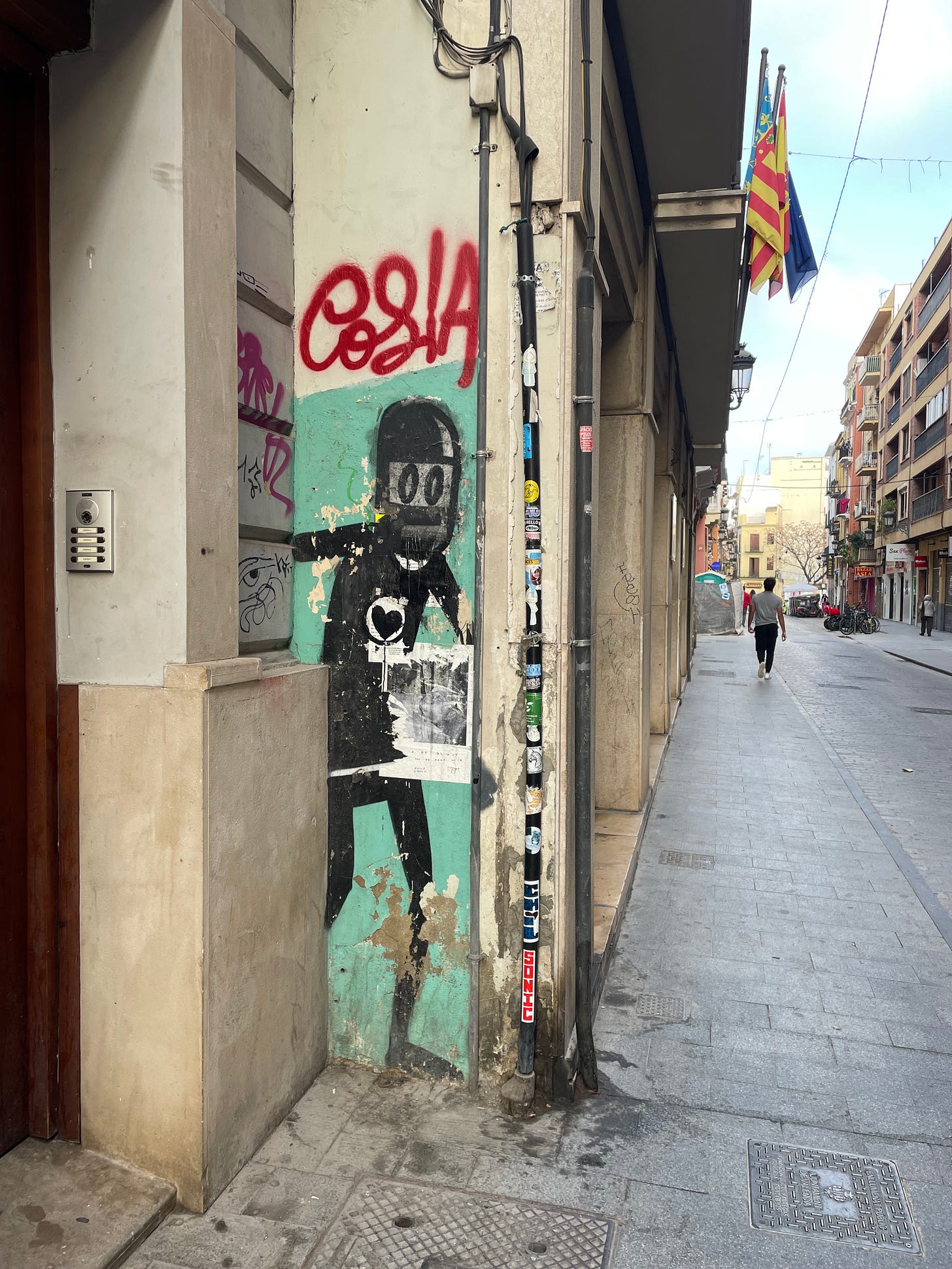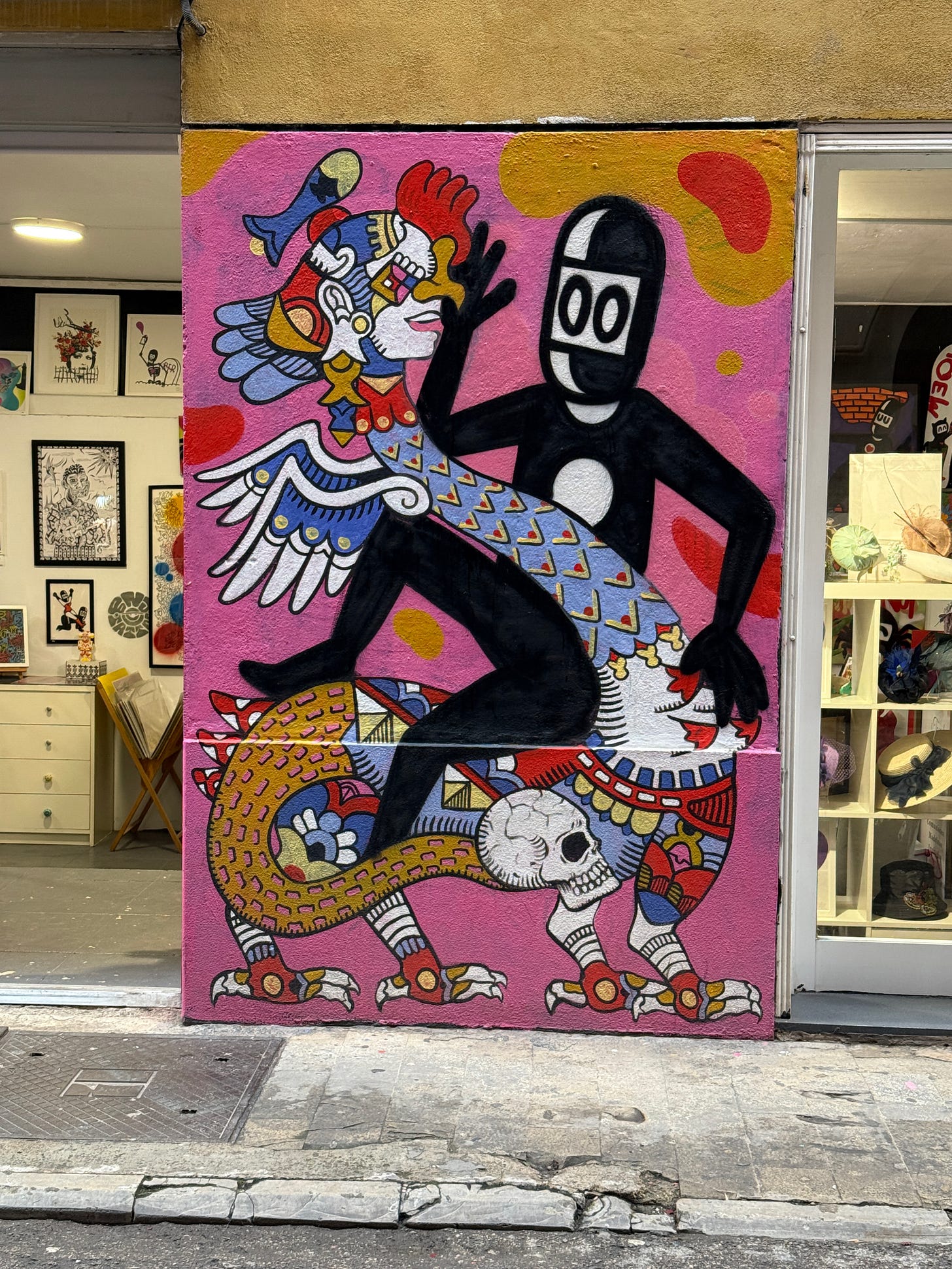David de Limón: the Street Artist at the Heart of Valencia
In a city full of graffiti, a select few artists have created work so loved that they are a part of Valencia's personality. David de Limón is one of them.
David de Limón, a well-known Valencian street artist, is a living example of the unique and envious culture that fuels the Spanish region’s glowing heart. If you venture this way, minutes after arriving in Valencia, you will notice the colorful street art marking each corner. You’ll gaze at older couples, romance still alive, sharing a coffee at ten in the morning on a Monday. Your mind will wonder at families picking up their children after school, both parents present and holding hands. Valencia is a city that puts family and the savoring of life at the highest level of priority. David, born and raised in the city and now celebrated by it, brings this culture to light on the streets with his art.
Graffiti came into David’s life when he was just seventeen. On his family’s annual trip to the mountains, which many of the families in his neighborhood took, he met two boys from his class who did graffiti. From then on, he was hooked. He had always loved doing art and this was a way for him to take doodling during class to an entirely new level. The last name, “de Limón,” isn’t his real surname but his graffiti tag. Valencia is known for its oranges and, to make things interesting, David chose to base his tag name off of the lemon (which he saw as the opposite of the orange). The lemon later became the signature image of David’s move from graffiti writing to street art.
While David’s work can be found being sold in various Valencia store fronts and his classic ninja character commissioned on walls around the city, he wasn’t always so…accepted. In his early graffiti years, the cover of night failed David three times and the police caught him. Two of those times he got lucky and was only written up. The third, however, took a turn and David had to appear in court. He recalled the story with a fit of laughter, the fine that the judge ordered was even less than it would have cost for him to paint over what he wrote on the wall. Now, no longer eighteen and with two sons under the age of five, David says that he doesn’t have enough time to do “vandalism.”
David later went on to attend university for photography. He originally intended to study dentistry, but decided it was too awful to bear. After studying photography for two years, he studied graphic design for another two and attended fine arts university for five years. Unique to other artists that I have spoken with, David greatly enjoyed the rules that his fine arts education applied. He felt that they taught him discipline, how to produce art, and time management. These skills have proved invaluable in working as a full time artist. He is frequently commissioned for murals and personalized pieces, does graphic design, teaches art workshops at the Barreira art school in Valencia, and his signature ninja character is sold across multiple platforms. It is a lot to handle, and those rules have helped David make it happen.
During our interview, David continued to stress that working as a full time artist was not an easy goal to reach. He started out working at a fast food restaurant on the weekends while he was still in school. This helped him make money but still gave him enough time to do his graffiti (at this point still risking encounters with the police). After graduation, David worked a traditional week-long graphic design job. This is when he discovered what he deems the “magic time” for graffiti, also known as seven in the morning on the weekends. Used to waking up early for work, David needed to fill his time after waking up at seven, so he decided to paint the streets. He realized that the only people out, despite the daylight, were those coming back from partying. He also noticed, most importantly, that seven a.m. was the time that the cops changed shifts. It was perfect. It was around then that he truly leaned into his street art and his weekday boss noticed. Instead of getting angry at him, he wanted to help. So he fired him. This meant that he was entitled to unemployment payments from the government to hold him over while he focused on his artwork. After the first couple of years he was able to support himself with his art. That is, until the COVID-19 pandemic. Sales were down and David made the move to start his teaching career. This meant a stable income while still being able to remain in a creative, artistic environment.
As a teacher himself, the most important thing that David believes he can teach his students is how to utilize their art for a truly important purpose. Regardless of their particular style, he sees art as an opportunity to communicate a specific meaning to the masses. He tells his students, “use your weapons.” For David, his weapons include his Valencian origin, the streets as his canvas (and promotion), and the unifying meaning across his work. That core meaning is positivity. It can be seen everywhere, whether his ninja character is found surfing a wave on one street or emerging from a heart on another. Love is key. While the ninja used to sport different symbols on its chest, it now almost always has a heart.
The heart truly solidified itself as a part of the ninja character as people around David expressed how much they loved it. Large numbers of people see his work, being that it is on the street, and they often change it. He appreciates that other people have influence over his art, which is fortunate given that he has a sizable Instagram following (@daviddelimon). Social media also serves as motivation for David to continue producing new pieces.
It is no surprise that Valencia loves David de Limón so much. He followed his heart and made his career a labor of love. And yet, he never forgets those who helped him along the way. He cares for his family and deeply appreciates that he is able to be in Valencia with them. His five year old son likes to draw his ninja character and has even pointed out a few things that he thinks his dad should change, one being that it should have a smile. Perhaps the most Valencian thing about David and his work is the focus: love and positivity. Street art often takes on the role of exposing the awful parts of society. David’s centers on bringing attention to the good.
When I asked him what he would like to say to readers, David described that dreams are important but recognizing where you are in the present moment (and what you can do with that) is far more significant. What part of your dream are you already living? As for him, he loves where he is.
David’s Instagram: https://www.instagram.com/daviddelimon/
David’s website/store: https://e30294-3.myshopify.com





